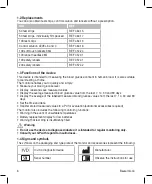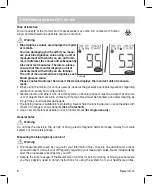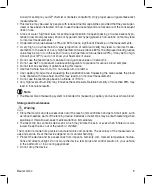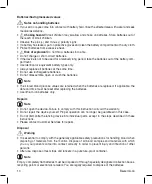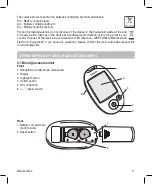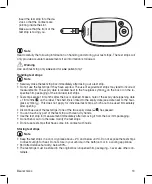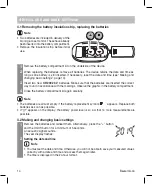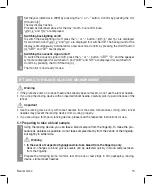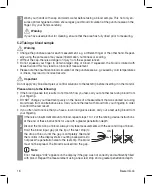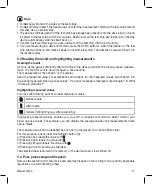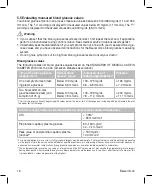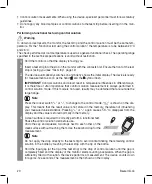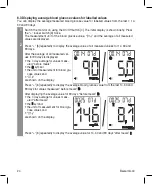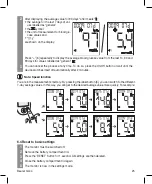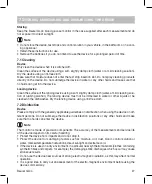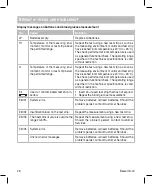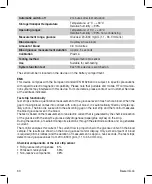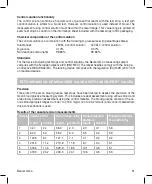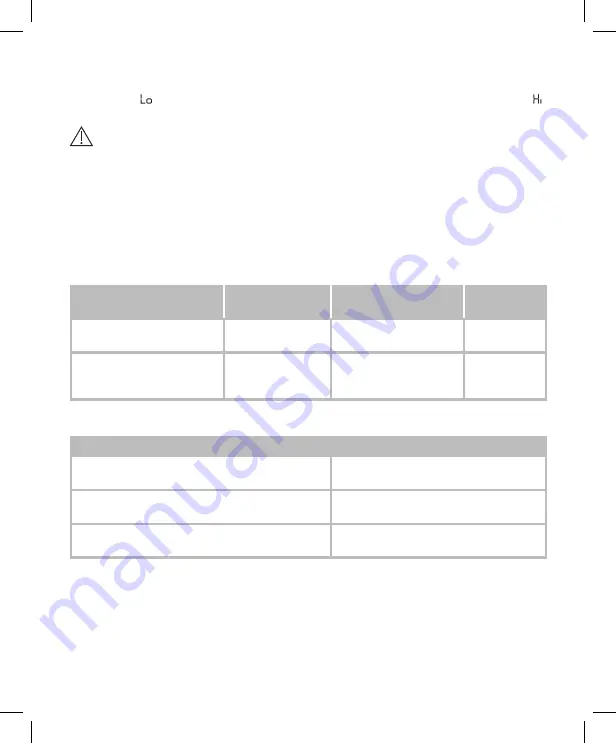
18
Beurer GL44
5.5 Evaluating measured blood glucose values
Your blood glucose monitor can process measured values between 20 and 630 mg/dL (1.1 and 35.0
mmol/L). The “ ” warning is displayed for measured values below 20 mg/dL (1.1 mmol/L). The “ ”
warning is displayed for measured values above 630 mg/dL (35.0 mmol/L).
Warning
• If you suspect that the blood glucose results are incorrect, first repeat the test and, if applicable,
perform a functional test using control solution. Seek medical advice if dubious results persist.
• Immediately seek medical attention if your symptoms are not in line with your measured blood glu-
cose values and you have observed all instructions for the Beurer GL44 blood glucose measuring
system.
• Do not ignore symptoms of too high/low blood glucose levels. Consult your doctor.
Blood glucose values
The following tables list blood glucose values based on the STANDARDS OF MEDICAL CARE IN
DIABETES 2016 from the ADA (American Diabetes Association).
Time of the blood glucose
measurement
Normal blood
glucose values
Increased risk of
diabetes (prediabetes)*
Diabetes
On an empty stomach (fast-
ing plasma glucose)
Below 100 mg/dL
Below 5.6 mmol/L
100 – 125 mg/dL
5.6 – 6.9 mmol/L
≥ 126 mg/dL
≥ 7.0 mmol/L
Two hours after an oral
glucose tolerance test (con-
sumption of 75 g)
Below 140 mg/dL
Below 7.8 mmol/L
140 – 199 mg/dL
7.8 – 11.0 mmol/L
≥ 200 mg/dL
≥ 11.1 mmol/L
* The risk increases continually, beginning with values below the lower limit of the range and increasing disproportionately towards
the upper limit of the range.
Overview of glycaemic recommendations for non-pregnant adults with diabetes
A1C
< 7.0%*
< 53 mmol/mol*
Preprandial capillary plasma glucose
80 – 130 mg/dL*
4.4 – 7.2 mmol/L*
Peak value of postprandial capillary plasma
glucose**
< 180 mg/dL*
10.0 mmol/L*
* For individual patients, more or less strict glycaemic targets may be appropriate. The target values should be adjusted depending
on the length of time the person has had diabetes, age/life expectancy, accompanying diseases, known cardiovascular diseases or
advanced microvascular complications, hypoglycaemia unawareness, as well as individual patient considerations.
** The postprandial glucose value can serve as a target value if the A1C values are not met despite the preprandial glucose targets
having been reached. Postprandial blood glucose measurements should be taken one to two hours after the start of a meal, as this
is when diabetics' values are generally at the highest.



